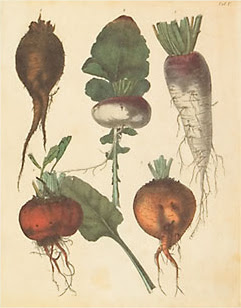This wasted energy is also known as "standby power" and it's the result of manufacturers being either too cheap or too stupid (maybe both...) to design their electronics so that they will not use any power when turned "off."
Although they use a smaller amount of energy than they would use when "on", it's nothing to sneeze your nose at. In fact, "vampire energy loss" accounts for 5-8% of a single family home's total electricity use each year, according to the Department of Energy. That is the rough equivalent of one month's energy bill!
This unintentionally wasted energy sends more than 97 billion pounds of carbon dioxide (1% of the world's carbon emissions) into the atmosphere according to vampire energy expert Alan Meier of Berkeley's very own Lawrence Lab. So the clock on your microwave and that little red light on your espresso maker are actively contributing to global warming...
This week, you're mission is to fight the energy "vampires" in your kitchen and beyond (what good is an energy-efficient kitchen if the rest of your house is still wasting energy, right?) I have to admit that I find it oddly satisfying to do this, and I bet you will, too.
Step 1: Hunt Down the Energy Vampires
Look for anything that has an LED light, clock, etc., as well as any electronic gadget or appliance that has a transformer (that little black box that converst the power from the wall into a usable form for your cell phone, computer, etc.)
Vampire energy guru, Alan Meier, estimates that the average home has roughly 40
If you want to get really systematic and geeky about this, you can also buy a little gadget called a Kill-A-Watt
Step 2: Kill the Vampires (Unplug!)
Once you've identified the vampires, drive a wooden stake into their hearts by unplugging them all. Or wave a powerstrip at them (it's the electronic equivalent of garlic) and watch as they cower and cringe...
Step 3: Find a System That Works For You
You may be someone who does not mind plugging and unplugging things all day long but if not, you'll need to spend an hour thinking through which appliances and gadgets you use most often and how to best group them together.
When my husband and I made the switch a few years ago, we had to do a little creative shuffling -- we grouped things we often use together (like our computers and our ipod) on the same power strip, switched things we never use (like our VCR which has gathered dust ever since we bought a DVD player) to different outlets so that we could leave them unplugged, and placed our cell phones in a prominent place to make it easier to remember to unplug the chargers once the phone is full.
You may want to buy more powerstrips (make sure you get the ones with built in surge protectors to safeguard your electronics from a surge) or you could invest in one of two new devices called a SmartStrip (roughly $35) and a Wattstopper (roughly $90) that allow you to leave things plugged in but minimize their power usage when you're not using them. I have not tried either one yet but they certainly sound very convenient (more so than the power strip model.) TreeHugger has a nice little write up on both devices - click here to learn more about them.
Step 4: Enjoy Conserving Energy & Saving Money!
As long as you remember to unplug things and to switch off your power strips (or potentially just plug everything you own into either a smartstrip or wattkiller), you should be both saving energy and money. I call that a win-win situation!
- Nix the Antibacterials
- Plant an Herb Garden
- Buy In Bulk
- Grow Your Own Garlic
- Say 'Buh-Bye' to Bottled Water
- BYOB (Bring Your Own Bags)
- How To Choose the "Right" Milk
- Skip the BPA, Switch to Glass Storage Containers
- Forget Free-Range, Buy Pasture-Raised Eggs From a Local Farm
- Buy BPA-Free Tomatoes & Beans



















